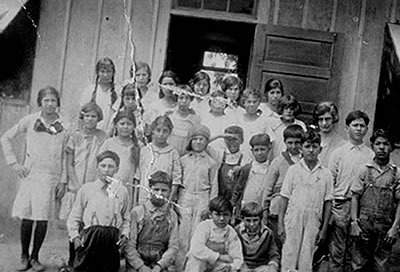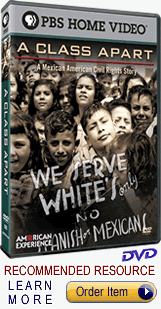SYLVIA MENDEZ GETS HIGHEST U.S. AWARD & HONOR

LANDMARK MENDEZ V. WESTMINSTER CASE RECEIVES SOME LONG OVERDUE RECOGNITION

continued from Page One
the extent of discrimination that Mexican Americans and significant other non black ethnic/cultural communities have also often experienced in this country.
With regard to Mexican Americans, it is very often stated by staunch Chicano activists that with the exception of overt slavery, there is not one form of outward discrimination and societal hatred that the African American has experienced that the Chicano (Mexican American) has not. Examples often cited are the great number of lynchings that have occured against people of Mexican descent, and the types of laws that have been legislated specifically aimed at suppressing the Mexican American population.
In recent years, an expansion of the dialogue on ethnic relations in the United States has begun to create more of an awareness on the extremity of discrimination that Mexican Americans have encountered ever since the beggining of U.S. government control in Western lands. Literally every aspect of life for the Mexican American community has been affected by what have often been institutionalized levels of discrimination such as: denial of health care; denial of housing; denial of loans; denial of promotions; ethnic profiling; inferior wages/nonpayment of wages; lack of representation; miscarriage of justice/wrongful incarcerations; official condemnations/public mockery; police brutality; prejudice of appearance; prejudice of culture; prejudice of religion; stealing of lands; stereotyping; and substandard living conditions; etc.. in addition to the denial of a good quality education, the main focus of this article.

Leading up to the the Mendez v. Westminster case in California, many Mexican Americans throughout the American West had been living under this unique dilemna of being officially classified as a segment of the white population, but having the de facto reality of living under segregated conditions as second class citizens and sometimes less. The dilemna was twofold, however. In order for the ruling white establishment to appease its conscience over the fact that a segment of its (then) own population would be treated differently in a nation that was proclaiming to have the values of freedom and liberty for all, it would need to develop ways of differentiating the Mexican American population from others in the 'proper' white community. The obvious distinctions were all given and very often used, such as: appearance; cuisine; language; and religion. Yet, during these early years of being identified as a sub-segment of the U.S. white population, additional ingenious ways of segregating the Mexican American population were readily devised. An example of this can be seen only five years after Calfornia officially entered the Union, when in 1855 the California State Legislature enacted "The Greaser Act". The stated intent of this law was “to protect honest people from the excesses of vagabonds.” However, in the law's definition of a vagabond, it's quite obvious to see who the real population being targeted was. According to the law, a vagabond was a person commonly identified as a “Greaser” (pejorative for Mexican American and Mexican) and "all people of (mixed) Spanish and Indian blood.” The law authorized the formation of local militias against the Mexican American community along with an ability to confiscate its property, and to lynch any individuals who would resist with impunity. Additionally, The Greaser Act allowed local authorities to use their discretion in chosing to either forcibly deport individuals to Mexico (irrespective if they were American citizens or not), or to instead incarcerate them for eventual forced labor needs.
While the Mexican American experience in California has always been difficult since the very first days of its statehood, it's important to know that there have been hardships and turmoils encountered by countless others in the Mexican American community throughout the United States which have been equally traumatic and painful. If there was ever a concerted effort made to assemble a tally on the number of oppressive laws that have been created as

